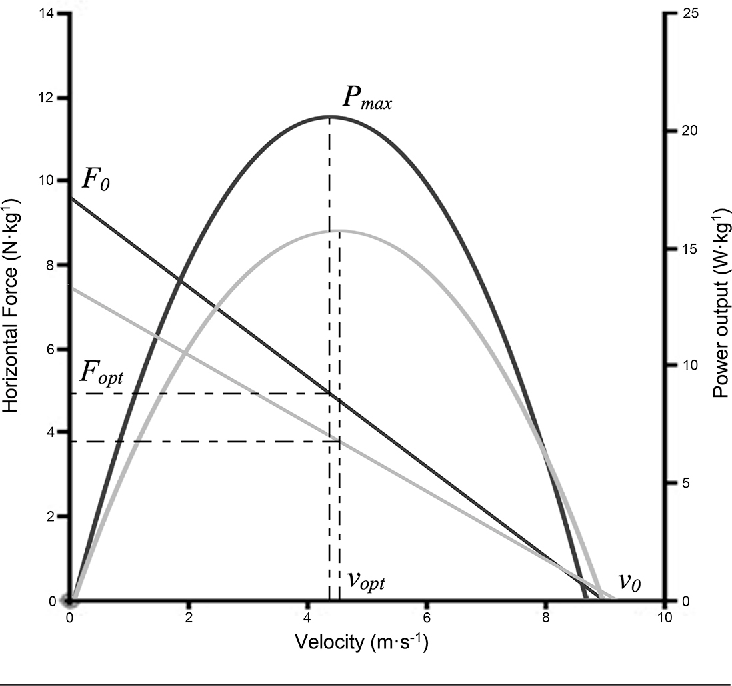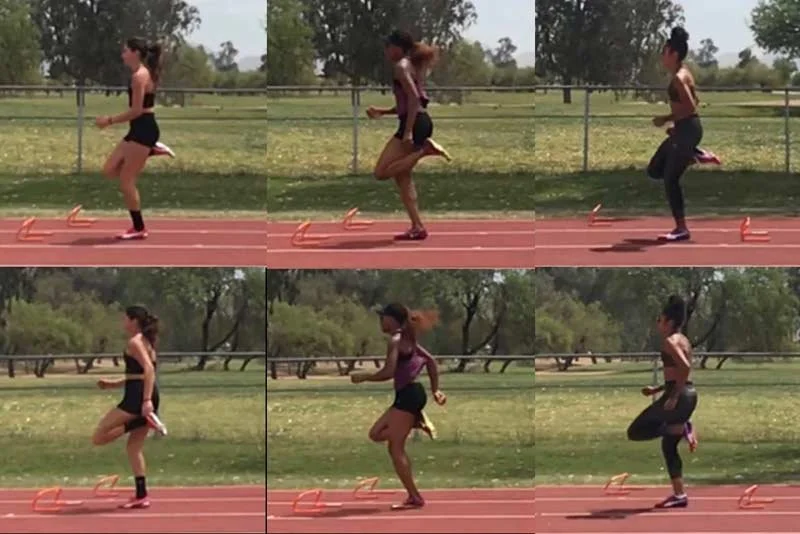Sprinting Part 3 – Sprint Technique Troubleshooting: Identifying and Correcting Common Sprinting Errors
Even with a well-structured training program, technical faults can limit an athlete’s sprint performance. Sprinting is a highly complex motor skill that requires coordination, precise force application, and efficient biomechanics. Suboptimal movement patterns not only reduce performance but also increase the risk of injury. Therefore, coaches must possess the tools to assess, identify, and correct common sprinting errors.
This article explores the science of sprint technique, the most frequent faults across sprint phases, and the evidence-based strategies to correct them. Drawing on motor learning research, biomechanics, and coaching methodology, we present a practical framework for improving sprint form through targeted interventions.
Sprint Mechanics Refresher
Before addressing technical faults, we must define what optimal technique looks like. Sprinting consists of several interrelated phases: acceleration, transition, and max velocity. Each phase places distinct demands on posture, force orientation, and coordination (Clark & Weyand, 2014).
Key technical markers of elite sprinting include:
Forward shin angles and projection in early acceleration (Morin et al., 2011)
Upright posture and vertical force orientation at max velocity (Weyand et al., 2000)
Minimal ground contact time with effective stiffness and quick force application
High heel recovery and tight backside mechanics
These ideal patterns serve as the reference points for identifying and correcting deviations.
Adapted from Athlete Performance 2014
Common Sprinting Errors by Phase
1. Acceleration Phase (0–10m)
Error: Vertical torso rise
Impact: Reduces horizontal force production and limits stride projection
Cause: Inadequate strength or poor cueing
Correction: Cue “forward lean”; reinforce with sled pushes, wall drillsError: Overstriding
Impact: Introduces braking forces and reduces step frequency
Cause: Misguided technical emphasis or lack of propulsion strength
Correction: Cue “push, not reach”; resisted marches and short bounds
2. Transition Phase (10–30m)
Error: Early upright posture
Impact: Disrupts continued acceleration and posture efficiency
Cause: Weak posterior chain, premature posture change
Correction: Progressive hill sprints, resisted bounds, fly-in sprintsError: Poor hip projection
Impact: Decreases stride power and disrupts rhythm
Cause: Limited hip extensor strength, lack of stiffness
Correction: Bounding, loaded hip thrusts, video feedback analysis
3. Max Velocity Phase (30m+)
Error: Over-rotation of torso or arms
Impact: Energy leaks and reduced linear sprint efficiency
Cause: Core instability or lack of sprint rhythm
Correction: Arm mechanics drills, core bracing, wicket runsError: Low heel recovery
Impact: Increased ground contact time, reduced turnover
Cause: Poor hamstring coordination, weak timing cues
Correction: A/B skips, fast leg drills, cue “heel to butt”Error: Collapsing at ground contact
Impact: Decreased stiffness and power loss
Cause: Weak ankle/knee extensors or tissue dysfunction
Correction: Reactive hops, pogo jumps, eccentric calf work
Motor Learning and Feedback: What Works?
Improving sprint technique requires more than cues—it demands an understanding of how athletes acquire and retain movement skills.
Research by Williams & Hodges (2005) supports using external cues (e.g., “push the ground away”) rather than internal ones (“extend your knee”) to promote automatic, efficient movement. This aligns with the constraints-led approach (Renshaw et al., 2010), emphasizing:
Manipulating the environment: Cones, wickets, or sleds to shape movement
Shaping tasks: Drills that reinforce biomechanical efficiency
Minimal instruction: Let the body self-organize under performance constraints
Video feedback accelerates learning:
Brown et al. (2017) found athletes receiving augmented video feedback improved technique faster.
Haugen & Buchheit (2016) showed significant improvements in elite sprinters using high-speed video review.
Practical Tools:
Coach’s Eye or Dartfish: Slow-motion breakdown of technique
Mirror sprinting: Immediate visual feedback during reps
Sprint profiling: Assess individual force-velocity curve to tailor interventions (Samozino et al., 2016)
Cross et al. (2019, adapted from Samozino et al.) showing the horizontal force–velocity–power profile during sprint acceleration:
Corrective Drills by Error Type
Error Drill/Strategy Purpose
Overstriding Wall drills, sled marches Reinforce front-side mechanics
Poor torso control Arm drills, dowel series, med ball sprints Improve core stability, rhythm
Low heel recovery A-skips, Moving Claw Series, Improve hamstring coordination
Early upright posture Hill sprints, resisted sprints Enforce proper acceleration posture
Collapsing on contact Pogo hops, ankle stiffness drills Build reactive strength and joint stiffness
Inconsistent rhythm Wicket runs, tempo sprints Improve step frequency and timing
McMillan, S. (2025, July 3). The altis kinogram method. SimpliFaster.
Sample Kinogram of Full Support Stance
Case Study: NFL Prospect Error Correction
Error Correction in Elite NFL Prospect During combine prep, a high-level defensive back presented with excessive torso rotation and inconsistent stride length beyond 30m. Video analysis revealed late foot strike at top speed and arm imbalance. Intervention included:
Intervention:
Med ball sprint throws to re-pattern rotational timing
1/2 kneeling and split stance arm action drills. Dynamic forward and backward walking and skipping, with unilateral band resistance to enforce trunk and spine correction and core engagement.
Overhead Dowel or MB technical drills and transition drills to reemphasize trunk position at the different phases of the sprint.
Wicket progressions to recalibrate stride mechanics
Heavy emphasis on strength and power unilaterally.
Outcome: 0.15s reduction in 40-yard dash over 8 weeks.
Programming Considerations
Programming Considerations for Sprint Error Correction: Incorporating technical work within the session or as a separate unit depends on training age and phase. However, I have used technical drills for 7-10 year olds and professional athletes alike. I have coached young kids through technical drills and transitioned them to application methods. The younger the athlete's training age, the more simplistic the drills need to be, and allow for free movement for motor learning. Eliminate wordy coaching and simplify the drills. For example, a college or professional athlete can “usually” perform an acceleration skip fairly easily with minimal to no complications. A younger kid might only be able to perform the movement with just the lower half, thus having them place hands on hips and perform marching and skipping patterns will simplify the drill and make it easier to digest and perform optimally. Same drill, less confusing, great outcomes for all levels of athletes.
Sample Week Format:
Monday (Acceleration): Wall drills → A- Series →Sled sprints → Sprint starts
Wednesday (Max Velocity): Wall Drills → B-Series →Wicket runs → Flying 20s
Friday (Integration): Sprint profiling → Full reps → Video review
Progression Tip: Overload not just in sprint volume, but in technical complexity—introduce drills that challenge coordination, force direction, and rhythm across phases.
Improving sprint technique requires a combination of biomechanical analysis, strategic cueing, and individualized feedback. By addressing specific errors with targeted drills and evidence-based methods, coaches can unlock latent speed potential and reduce injury risk. In the next blog, we will explore recovery, regeneration, and monitoring tools to support high-performance sprint training.
Stay tuned for Part 5, where we’ll explore regeneration, monitoring tools, and recovery methods to support long-term sprint development.
References
Brown, S. R., Jimenez-Reyes, P., Samozino, P., & Morin, J. B. (2017). Sprint acceleration mechanics: The major role of hamstrings in horizontal force production. International Journal of Sports Physiology and Performance, 12(2), 172–176.
Clark, K. P., & Weyand, P. G. (2014). Are running speeds maximized with simple-spring stance mechanics? Journal of Applied Physiology, 117(6), 604–615. https://doi.org/10.1152/japplphysiol.00174.2014
Haugen, T., & Buchheit, M. (2016). Sprint running performance monitoring: Methodological and practical considerations. Sports Medicine, 46(5), 641–656.
McMillan, S. (2025, July 3). The altis kinogram method. SimpliFaster. https://simplifaster.com/articles/altis-kinogram-method/
Morin, J. B., Edouard, P., & Samozino, P. (2011). Technical ability of force application as a determinant factor of sprint performance. Medicine and Science in Sports and Exercise, 43(9), 1680–1688.
Renshaw, I., Davids, K., Newcombe, D., & Roberts, W. (2010). The constraints-led approach: Principles for sports coaching and practice design. Routledge.
Samozino, P., Rabita, G., Dorel, S., Slawinski, J., Peyrot, N., Saez-de-Villarreal, E., & Morin, J. B. (2016). A simple method for measuring power, force, velocity properties, and mechanical effectiveness in sprint running. Scandinavian Journal of Medicine & Science in Sports, 26(6), 648–658.
Williams, A. M., & Hodges, N. J. (2005). Practice, instruction and skill acquisition in soccer: Challenging tradition. Journal of Sports Sciences, 23(6), 637–650.
Weyand, P. G., Sternlight, D. B., Bellizzi, M. J., & Wright, S. (2000). Faster top running speeds are achieved with greater ground forces not more rapid leg movements. Journal of Applied Physiology, 89(5), 1991–1999.




